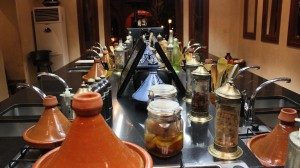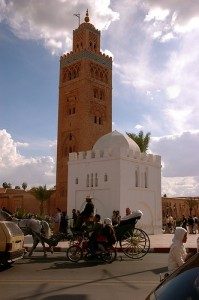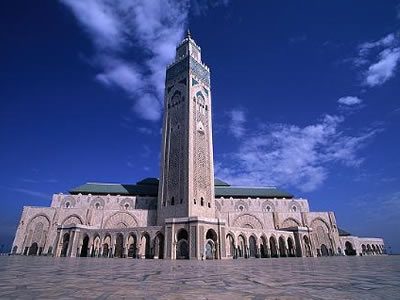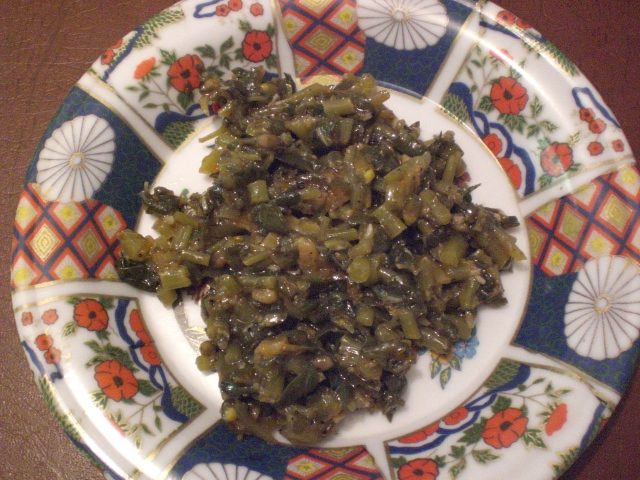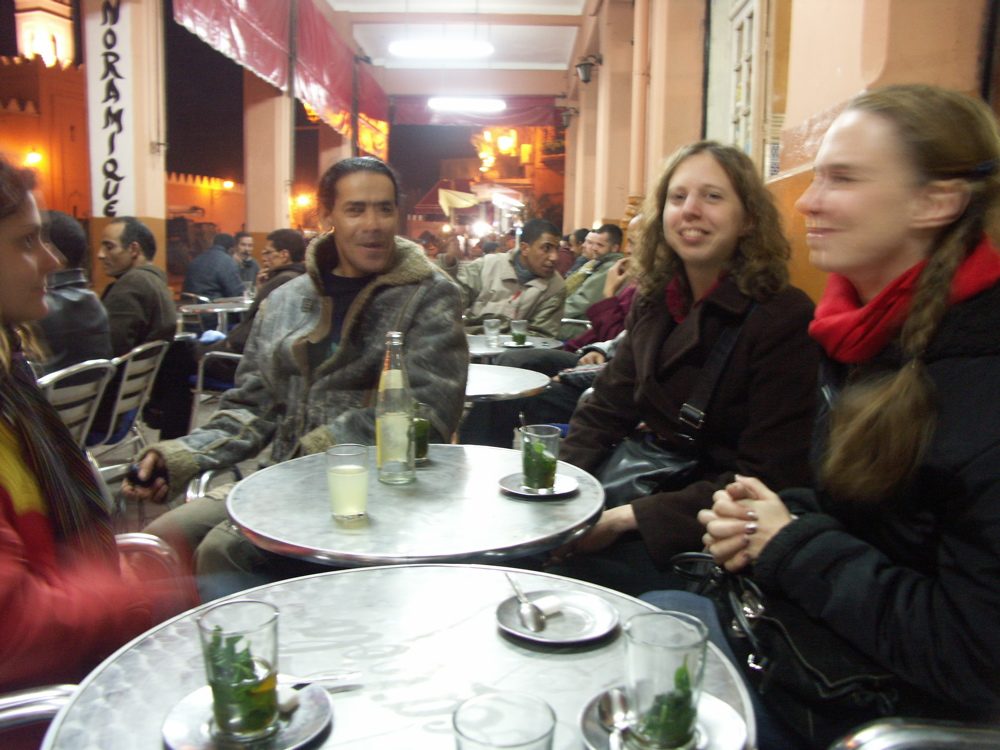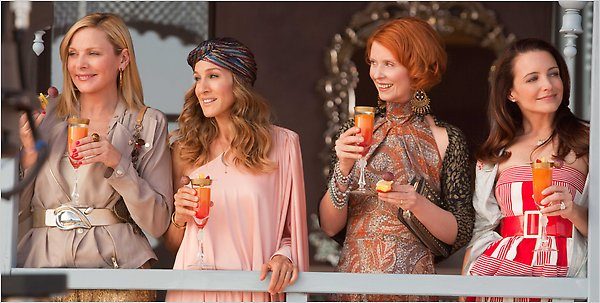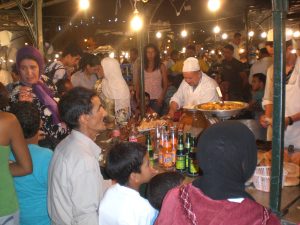Learning some of the basics of Moroccan cooking can be an enjoyable experience and adds to your own culinary skills back home. Many riads offer cookery classes for their clients during their stay. These usually begin with a trip to the souk accompanied by one of the staff to buy produce and spices. In contrast to shopping at home everything is bought fresh, for home-cooking. The market stalls include piles of spices, and fresh fruits, nuts and fine local vegetables all beautifully laid out with the fragrance of mint and cilantro . Shopping in the souks of Morocco is a keen sensory experience, as well as a chance to experience local daily life as buyers and sellers haggle over prices.
Tag: marrakesh
If you’re traveling to Morocco and only have 24 Hours in Marrakech then visiting Marrakech’s lush gardens, spectacular palaces, historical sites, the hippest shops and eating at the hot spots are a must. In 24 hours you can see the best of Marrakesh knowing exactly what places to visit, sites to see and where to eat. Start your a one-day Marrakech tour around the “red hamra” city bright an early with a visit to the Majorelle Gardens. Next, head to the Koutoubia Mosque and then to the El Bahia Palace. The breathtaking architecture of the El Bahia Palace offers an excellent architecture lesson as it was once home to a harem and has some of the best Moroccan painted ceilings, ceramics and a wonderful garden. Continue your walk through the medina visiting the Kisseria.
Ramadan in Morocco and other Islamic countries is an unusual time when in addition to heightened spirituality, a special atmosphere permeates the culture unlike the rest of the year. This is even more true when the month falls outside of the school year, as most of it does this year, 2010. Normal schedules are completely turned around during Ramadan, and people enjoy special foods and family celebration.
Pasha T’hami Glaoui was the most powerful man in Morocco between 1953 and 1956, in addition to being one of the richest men in the world at that time. The title Pasha means Governor. Glaoui was the Pasha of Marrakesh (since 1912), Ouarzazate, and most of the Moroccan south during the time Morocco was under French rule. The most important Kasbahs’ in Morocco that were occupied by the Pacha Glaoui during his reign and are frequented by Moroccan travelers today are Kasbah Taouirt, located in the center of Ouarzazate, Ait Benhaddou, located 15 kilometers outside Ouarzazate and Kasbah Telouet which sits in the village of Telouet nestled outside the Onilla Valley.
Moroccan terjla (the Moroccan Arabic name) is frequently prepared as a side dish, and can be served either hot or cold. Terjla, a succulent plant, known as purslane in English and verdolaga in Spanish, is not only one of the most delicious Moroccan plants, but it is simple to prepare. Being a dark green plant, it is loaded with iron, vitamins, and minerals. It also has a mild lemony flavor. When traveling to Morocco make sure to ask your Moroccan Travel Agency to recommend restaurants or local places where you can taste Moroccan terjla in a traditional restaurant.
Enjoying the ambiance in various Moroccan cities is partly what a trip to Morocco is all about. When traveling to Morocco, make sure to take time out to enjoy Moroccan coffee and the cafe ambiance that each city offers. Marrakech, Tangier, Essaouira and Agadir are known for having the most and the best cafe’s, the best variety of Moroccan Arabic coffee and are spacious, comfortable hotspots for people watching. Moroccan coffee is different from American coffee. The two most commonly-ordered types are black, served in a Moroccan tea glass, and coffee with milk, usually served in a cup, but sometimes in a tea glass.There are several types of coffee with milk. The first is café cassé, which means black coffee broken with a little bit of milk. The other common type is “café nss nss” (no vowel in nss), which means half coffee (made with water) and half milk.
Adopt a Moroccan schedule To Beat the Heat in Morocco During Summer & Other Seasons. Take advantage of the cool early morning hours in Morocco in Summer by taking a mid-moring snack and a late lunch about 1:00 PM. Take a nap in your air-conditioned hotel room or traditional Moroccan Riad, or a dip in the pool. Around 4 PM, have a snack, and head out again around 4:30-5:00 PM. You won’t miss much, because Moroccans tend to lie low during this same time. Enjoy yourself until dark, then head off for dinner around 8-9:00 PM. Take advantage of the Moroccan night life during the cool evening hours if you’re staying in Imperial cities such as Marrakech, Essaouira or Casablanca, all which boast varied restaurants with Moroccan and International cuisine along with entertainment.
Step into the world of the Arabian Nights with New Line Cinema’s Sex in the City 2, a fabulous wish-fulfillment movie for women, filmed in Morocco, and opening in theaters on May 28, 2010. Indeed Sex in the City has left New York for majestic Morocco. Spectacular photographs from its North African set will leave an impression on viewers of this sequel film. Filmed in the Souks of Marrakech, actresses Sarah Jessica Parker and Cynthia Nixon were spotted pounding their heals through Marrakesh’s Djemaa El Fna Square, according to the UK Daily Mail Online
Djemaa El Fna Square is in the heart of Marrakesh, Morocco is like no where else on earth, and an adventure not to be missed after dusk. Courageous travelers in Morocco will definitely want to eat in the Djemaa El Fna Square. Tourists can avoid any chance of illness simply by sticking to foods that are actually cooked in front of them, and passed over to be eaten off of a clean paper. The Moroccan family in the photo above is waiting for their main course to come out of the cooking pot in front of them.Whether you choose to eat or not, just a stroll through the Djemaa El Fna Square in the evening can provide some very unique photo opportunities.
If you are an olive olive lover, you will find Morocco to be a paradise! All the different colors and varieties of olives are cured with different methods. The lemony greens, the succulent reds, and the pungent blacks are all done in several different ways, and each style has separate uses in the Moroccan cuisine. Once the olives are cut off the trees in mid-November, they are usually cut in Morocco with a razor blade, using a long, diagonal slash. During the hand-cutting, they are sorted by color into green, red, and black, all going into different vats.

